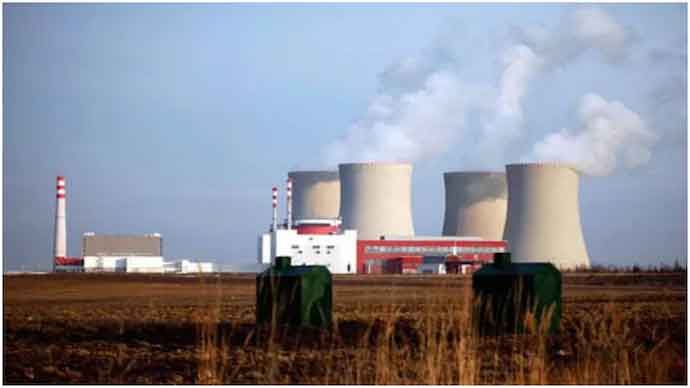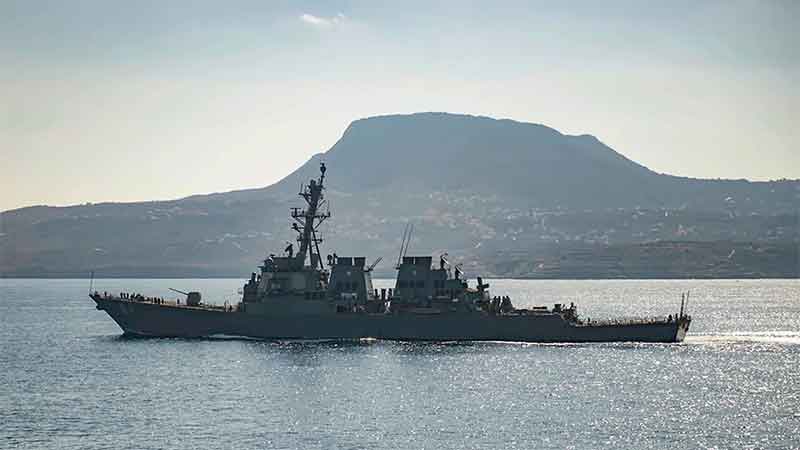
It was a policy that was bound to send a shiver through the policymaking community. The issue of nuclear energy in Australia has always been a contentious one. Currently, the country hosts a modest nuclear industry, centred on the Australian Nuclear Science and Technology Organisation (ANSTO), nuclear medicine and laboratory products. But even this has created headaches in terms of long-term storage of waste, plagued by successful legal challenges from communities and First Nation groups. The advent of AUKUS, with its inane yet provocative promise of nuclear-powered submarines for the Royal Australian Navy, adds yet another, complicating dimension to this fact. Without a clear idea of a site, a vital part of the nuclear dilemma remains unresolved.
Broadly speaking, the nuclear issue, in manifold manifestations, has never entirely disappeared from the periphery of Australian policy. The fact that Australia became a primary testing ground for Britain’s nuclear weapons program was hardly something that would have left Canberra uninterested in acquiring some nuclear option. Options were considered, be they in the realm of a future weapons capability, or energy generation.
In a June 29, 1961 letter from Australian Prime Minister Robert Menzies to his counterpart in the UK, Harold Macmillan, concerns over the impediments imposed by a potential treaty that would impose limitations on countries the subject of nuclear testing were candidly expressed. Were that treaty to go ahead, it “could prove a serious limitation on the range of decisions open to a future Australian Government in that it could effectively preclude or at least impose a very substantial handicap on Australia’s acquisition of nuclear weapons.”
Menzies put forth a suggestion that was ultimately never pursued – at least officially. An arrangement deemed “more practical,” suggested the Australian PM, might involve “the supply of ready-made weapons” at the conclusion of such a treaty.
A sore point here were efforts by the Soviets to insist that countries such as Australia be banned from pursuing their own nuclear program. Menzies therefore wished Macmillan “to accord full recognition of the potentially serious security situation in which Australia could find herself placed as a result of having accommodated United Kingdom testing.”
Australia eventually abandoned its nuclear weapons ambitions with the ratification of the Treaty on Non-Proliferation of Nuclear Weapons (NPT) in February 1970, preferring, instead, the nuclear umbrella of extended deterrence offered by the United States. (The nature of that deterrence has always seemed spectacularly hollow.) Domestically, nuclear technology would be sparingly embraced. Nuclear power stations, however, were banned in every state and territory, a policy left unchallenged by a number of parliamentary inquiries.
The quest of meeting emissions reduction targets during the transition to the goal of net zero was bound to refocus interest on the nuclear power issue. The Liberal-National opposition is keen to put the issue of nuclear power back on the books. It is a dream that may never see the light of day, given, according to the chief government scientific body, the CSIRO, its uncompetitive nature and the absence of “the relevant frameworks in place for its consideration and operation within the timeframe required.”
Australian politicians have often faced, even when flirting with the proposition of adopting nuclear power, firm rebuke. South Australian Premier Malinauskas gave us one example in initially expressing the view late last year that “the ideological opposition that exists in some quarters to nuclear power is ill-founded.” It did not take him long to tell the ABC’s 7.30 program that he did not wish “to suggest that nuclear should be part of the mix in our nation.” Australia had to “acknowledge that nuclear power would make energy more expensive in our nation & [we should] put it to one side, rather than having a culture war about nuclear power.”
Opposition Leader Peter Dutton has been by far the boldest, pitching for a gentler exit from the fossil-fuel powered nirvana Australia has occupied for decades. Australia, he is adamant, should join “the international nuclear energy renaissance”. Of particular interest to him is the use of Small Modular Reactors (SMRs), which might be purposefully built on coal generator cites as part of the general energy package alongside renewables. SMRs, as Joanne Liou of the International Atomic Energy Agency explains, “are advanced nuclear reactors that have a power capacity of up to 300 Mw(e) per unit, which is about one-third of the generating capacity of traditional nuclear power reactors.”
The heralded advantages of such devices, at least as advertised by its misguided proponents, lie in their size – being small and modular, ease of manufacture, shipping and installation. They also offer, according to the International Atomic Energy Agency, “savings in cost and construction time, and they can be deployed incrementally to match increasing energy demand.”
For all these benefits, the cold reality of SMR designs is how far they have yet to go before becoming viable. Four SMRs are currently in operation, though these, according to Friends of the Earth Australia’s lead national nuclear campaigner, Jim Green, hardly meet the “modular definition” in terms of serial factory production of components relevant to such devices.
Russia and China, despite hosting such microreactors, have faced considerable problems with cost blowouts and delays, the very things that SMRs are meant to avoid. Oregon-based NuScale has tried to convince and gull potential patrons that its small reactor projects will take off, though the audience for its chief executive John Hopkins is primarily limited to the Coalition and NewsCorp stable. The company’s own cost estimates for energy generation, despite heavy government subsidies, have not made SMR adoption in the United States, let alone Australia, viable.
In his second budget reply speech in May, Dutton showed little sign of being briefed on these problems, stating that “any sensible government [in the 21st century] must consider small modular nuclear as part of the energy mix.” Labor’s policies on climate change had resulted in placing Australia “on the wrong energy path.”
Such views have not impressed the Albanese Government. Energy Minister Chris Bowen insists that counterfeit claims are being peddled on the issue of the role played by nuclear energy in Canada along with false distinctions between the costs of nuclear power and renewable energy.
“If they are serious about proposing a nuclear solution for Australia, the simplistic bumper stickers and populist echo chamber has to come to an end. Show the Australian people your verified nuclear costings and your detailed plans about where the nuclear power plants will go.”
Such verification will be a tall order indeed. As the CSIRO concedes, “Without more real-world data for SMRs demonstrating that nuclear can be economically viable, the debate will likely continue to be dominated by opinion and conflicting social values rather than a discussion on the underlying assumptions.”
Dr. Binoy Kampmark was a Commonwealth Scholar at Selwyn College, Cambridge. He currently lectures at RMIT University. Email: [email protected]
















































